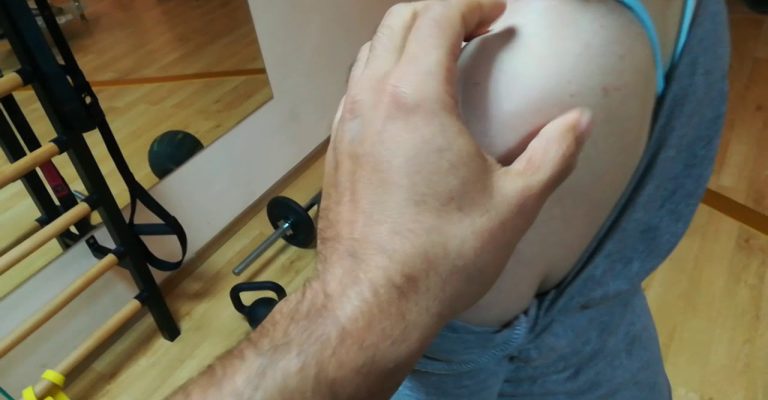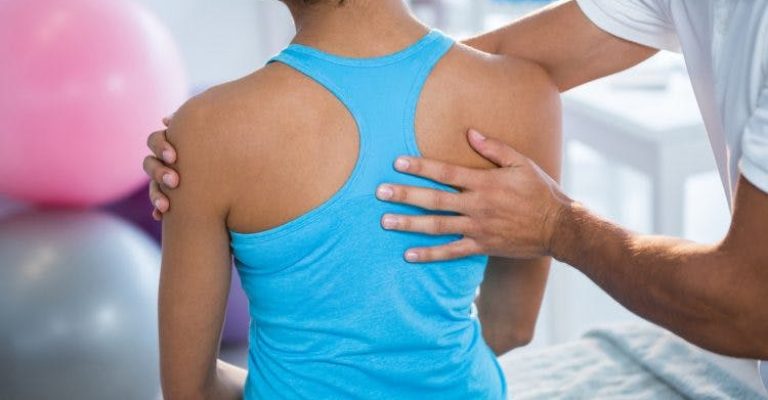
After a stroke, When the arm gets partly dislocated from the shoulder socket owing to muscular weakness or paralysis, this is referred to as shoulder subluxation. While this is an unpleasant and restricting after-effect of a stroke, recovery is generally feasible with the correct therapy plan.
This article will explain the reasons and remedies for shoulder subluxation after stroke to help you decrease discomfort and increase mobility. You’ll also discover why shoulder subluxation exercises are essential for rehabilitation.
Shoulder subluxation is a frequent complication after a stroke and may be caused by muscular weakness or spasticity. It is distinguished by the dislocation of the upper arm bone (humerus) from the shoulder socket. Muscles may be too weak to anchor the arm bone in the shoulder socket, or spasticity may induce subluxation by pushing the bone into an unnatural posture. Muscle weakness and spasticity may also cause the shoulder blade (scapula) to be positioned incorrectly.
Gravity pressing down on the arm may cause the humerus to “drop” lower in the socket if the muscles surrounding the shoulder, known as the rotator cuff, become weak or paralyzed following a stroke.
Shoulder subluxation is a painful disease that may develop if left untreated. If you have shoulder subluxation, you should consult a therapist right once for a precise diagnosis and treatment plan.

Physical therapy, exercises, and other therapies are often used to treat shoulder subluxation after a stroke. Here are some of the most regularly utilized therapy options:
Physical therapy is a critical component in treating shoulder subluxation after a stroke. A physical therapist will work with the patient to recover shoulder and arm range of motion and strength. Stretching, range of motion, and strengthening exercises may all be included.
If your arm is paralyzed as a result of a stroke, you’ll need to work extra harder with a therapist to discover the correct exercises and management approaches. Electrical stimulation may be recommended by your therapist in addition to your workouts since it is an excellent approach to introduce mobility to paralyzed muscles.
Electrical impulses are used by your brain to communicate with your muscles, and electrical stimulation aids in this process. This stroke recovery treatment helps “wake up” the muscles surrounding your shoulder, and your arm may eventually return to (or remain in) its socket. Consult your therapist to determine where to put the electrodes and the optimal settings for you.
A shoulder abduction pillow is a unique cushion intended to maintain the patient’s injured arm in a safe posture while sleeping. This may assist in keeping the shoulder from subluxing more and enable it to recover.
Braces or slings may be used to support the afflicted arm and prevent it from subluxing further.
An occupational therapist may assist the patient in discovering alternative methods to do everyday tasks with their afflicted arm, hence reducing the load of subluxation.
It is important to remember that each patient is unique, and the treatment method may differ appropriately. The healing process may take some time and patience. Treatment for shoulder subluxation after a stroke aims to assist the patient in restoring range of motion and strength in the afflicted arm while also preventing additional dislocation.
A multidisciplinary team approach, with the physical therapist, occupational therapist, and physician working together to establish a tailored treatment plan that meets the patient’s unique requirements, may also be beneficial.
It is also vital to remember that the patient must be motivated to complete their treatment, including a home exercise regimen, in order to sustain and continue the improvement made in physical therapy sessions.
Because shoulder subluxation is a severe condition, it’s critical to check with your therapist before starting any exercises to ensure they’re safe and effective for you. Your therapist will be able to recommend the best exercises for you to address shoulder mobility, strength, and functional activities of daily living.
The purpose of rehabilitation exercise is to practice optimal movement and mechanics in order to support neural connection healing and enhance overall shoulder strength. To excite the brain and assist the rewiring process, rehab activities should be done with high repetition.
Here are some exercises for shoulder subluxation that your therapist could recommend:

Place your forearm on a table at 12 o’clock, pointing straight forward. After that, hold a water bottle in your hand.
Form a fist, then “punch” the water bottle forward by sliding your forearm over the table. Make careful to go slowly and softly. Then return to your original location. Instead of leaning forward at the hips, try pushing the water bottle away with your arm and shoulder.
Repeat 10 times with your non-affected side bringing the water bottle back towards you. If this activity causes discomfort, stop immediately.
Place your feet around 30 to 60 cm away from a wall. If you experience any discomfort while doing this exercise, move closer to the wall.
Lean forward and place your hands on the wall slightly wider apart than your shoulders.
Lean your body gently against the wall. Then return to your original location. Maintain a smooth and controlled motion.
Rep 8 to 12 times more.
Place your forearm on the table, your arm at 12 o’clock, and the water bottle towards the outside of your wrist.
Then, like a windshield wiper, push the water bottle laterally away from your body by sliding your forearm over the table while maintaining your upper arm attached to your side. Stop the workout here, then return to the beginning position and repeat the exercise 10 times.
Kinesio taping is a method that may help to retrain the brain and muscles in order to decrease shoulder subluxation. It entails gently stretching strips of kinesio tape on your upper arm and shoulder to stimulate the muscles and promote optimal shoulder joint placement.
The tape will provide a mild, supporting tug on the brain, encouraging the humerus to return to the shoulder joint. This may aid with pain relief and maintaining appropriate shoulder posture during rehabilitative activities. Inquire with your therapist about which kinesio taping approach is best for you.
When the arm muscles are significantly weakened or paralyzed as a result of a stroke, gravity pulls the humerus partly out of the shoulder socket. Fortunately, with the phenomena of neuroplasticity and the correct rehabilitation program, the brain may restore control of the arm muscles.
Your humerus may gradually return to its original position with adequate time and regular practice. To continue recuperating at home, work closely with a therapist and follow any recommendations they give you.